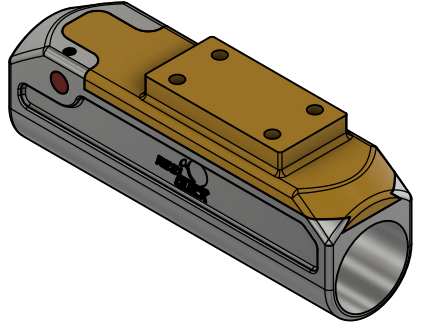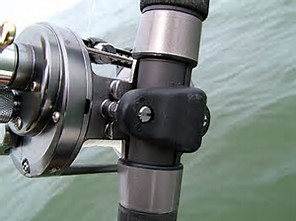Introduction
Most fishing rods are typically comprised of a ‘butt’ section on which a reel is mounted. Where the reel is mounted to on the butt is referred to as the “reel seat.” The “reel seat” provides a means to attach a reel to the rod, securely anchoring the reel. On most fishing reels there are two narrow thin feet to secure the reel to the “real seat”. The forward (or rear) foot is inserted in a secured groove that is permanently built into the rod butt. The rear (or forward) foot is inserted in a shroud or “ring piece” which has the same groove design as the rear foot. Additional, larger reels and most saltwater reels have added a bracket that fits around the butt and reel seat secured by two screws. This is done in case the existing shroud or ring piece fails or the reel seat, often made of plastic, fails. This makes for a bulky and often heavy design. Pieces can be lost or fall overboard when assembling and de assembling rods and reels which is necessary for proper storage, transportation, service and cleaning of the reels. Reels have been attached to fishing rods this way for over one hundred years. There is a better way. The enclosed design adds significant functional advantages to the rod and reel connection making for a better more secure attachment system that can be snapped and locked into place in a couple seconds verses several minutes with the “old” system. Furthermore, this new attachment system can be made from a variety of modern materials making for a lighter and stronger connection than what currently exists in the market.
The angler depends on establishing a secure stable connection of the fishing reel to the rod butt section of the fishing rod. Otherwise, when casting line from the reel or fighting a fish, the reel can turn in the seat on the reel butt. This can lead to the reel falling off the rod butt or shifting position. If the reel shifts, the angle changes in which the line travels through the first guide of the fishing rod, touching one or more of the rod guides. Any friction on the line weakens its tensile strength, resulting in the increased risk of a broken line when fighting a fish.
The device insures the reel not moving on its base, a problem, currently encountered with the old design especially after continued use or long hours of fighting large fish. Furthermore the same reel can easily be mounted on multiple rods, reels can be swapped with rods in seconds back and forth.


Too Many Parts


